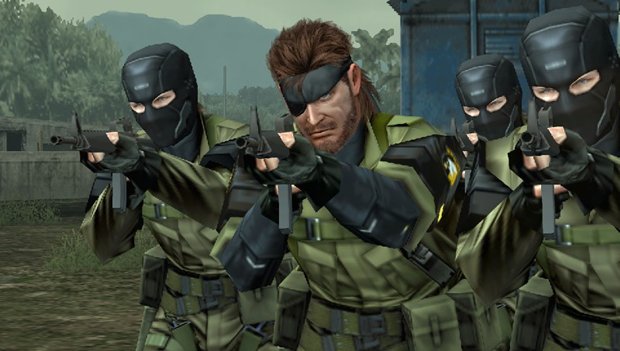8 things you need to know about MGS: Peace Walker
16-hour hands-on teaches us valuable lessons about giant robots, taking enemies alive and Monster Hunter
Metal Gear Solid: Peace Walker is going to be big. And by that, we don't mean "successful," even thought it seems to be the only PSP game anyone's interested in anymore (or was, untilGod of War: Ghost of Spartawas announced). No,we mean that the game itself is huge. To wit, we recently spent a whopping 16 hours playing through its story, both by ourselves and in co-op mode with other journos, and it barely feels like we scratched the surface. There's tons of stuff to do and collect, and the game kept unlocking new modes and options after we thought we'd played long enough to open up everything.

We also liked what we played - a lot. In fact, the only things we really disliked about the game were the hand cramps that developed after playing a PSP for 16 goddamn hours. To give you an idea of what sorts of things you can look forward to when the game ships on June 8, we've scraped together a list ofeight vital facts we came away withfrom our extensive hands-on:
1. It%26rsquo;s basically Monster Hunter
If you were surprised tofind out last monththat Peace Walker is going to feature guest stars from, of all things, Monster Hunter, you might be even more surprised to learn the real reason why. As much as it’s a legitimate sequel to both Metal Gear Solid 3 and Portable Ops, as much as it oozes Cold War paranoia from every pore, Peace Walker is essentially a Metal Gear-themed Monster Hunter game.

Above: METAL GEAR!?
That probably sounds weird, but it makes sense if you think about it for more than five seconds: Monster Hunter is tremendously successful and the most popular thing on PSP (in Japan, anyway), so it’s not that surprising that a new PSP Metal Gear would try to emulate it. (It is kind of surprising that Peace Walker is wearing that emulation on its sleeve, though.) After the time we’ve spent playing Peace Walker, though, we can say that the change in format works surprisingly well (even thought we didn't play long enough to make it to the game's Monster Hunter-themed island).
Peace Walker takes the best elements of Monster Hunter – the long missions made up of networks of small environments, the massive boss fights, the thrill of harvesting random crap from fallen enemies (including the “enemies” themselves, if you manage to knock them out instead of kill them) and the fun of hunting alongsideone to threebuddies – and ditches the pain-in-the-ass backtracking, load times and clunky combat.

It then pairs up what’s left with MGS’ traditional stealth-shooter action, replaces the monsters with soldiers and war machines, adds a fairly deep personnel-management angle and wraps it all in a story that, so far, has been a lot more interesting and involving than the one that drove Portable Ops. Oh, and it’s got boss fights against giant robotic death-platforms that sing in women’s voices. That’s pretty weird.
Sign up to the GamesRadar+ Newsletter
Weekly digests, tales from the communities you love, and more
2. The story is catnip for Metal Gear fans
Long, incredibly chatty cutscenes have been a staple of Metal Gear Solid for years, and Peace Walker is no different. Want long conversations about Cold War politics and nuclear deterrence? You’ll get a lot of them here. However, you’ll also get a lot of appearances by familiar (or at least familiar-looking) characters, and a lot of answers about the history of some of the series’ most enduring figures.

Above: Kazuhira Miller, center, fills in for Roy Campbell as Snake's second-in-command
Beginning in Colombia about four years after the events of Portable Ops (and 10 after MGS3: Snake Eater), Peace Walker opens to find Naked Snake/Big Boss in command of his own ragtag mercenary unit, Militaires sans Frontiers (Soldiers Without Borders). Things start to get more interesting when Snake is visited by Galvez, a man claiming to be a Costa Rican official, who brings along his teenage “pupil,” Paz Ortega Andrade.



